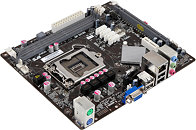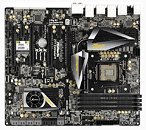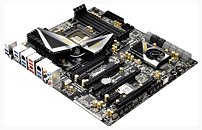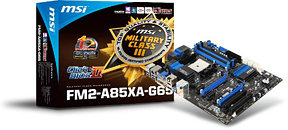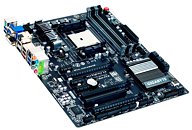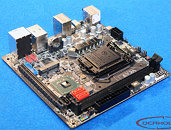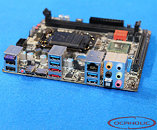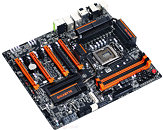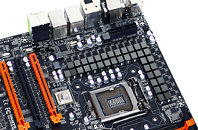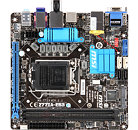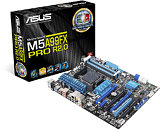
Gigabyte Announces the Z77X-UD4H Motherboard
Gigabyte launched the Z77X-UD4H, a new socket LGA1155 motherboard model designed to fill the gap between the $155 Z77X-UD3H and $190 Z77X-UD5H. It is built with Gigabyte's Ultra Durable 4 construction, featuring 2 oz copper layer, temperature, humidity, and electrostatic protection features. The LGA1155 socket is powered by a 11-phase VRM that draws power from an 8-pin EPS connector. The socket is wired to four DDR3 DIMM slots, and three PCI-Express 3.0 x16 slots (electrical x16/NC/NC, x8/x8/NC, x8/x4/x4, depending on how they're populated). 3-way NVIDIA SLI and AMD CrossFireX are supported. Other expansion slots include three PCI-Express 2.0 x1, and a legacy PCI.
Straightaway, you'll notice that Gigabyte did away with the mSATA slot featured on the Z77X-UD3H and Z77X-UD5H. In addition to the two SATA 6 Gb/s and four SATA 3 Gb/s ports that the Z77 PCH provides (all of which are wired as internal ports), Gigabyte added two additional 2-port SATA 6 Gb/s controllers, which provide two each of internal SATA 6 Gb/s, and eSATA 6 Gb/s. The board features a total of eight USB 3.0 ports, six on the rear panel, and two by headers. In addition to the four ports the Z77 PCH provides, a 4-port VLI-made host controller is used.
Straightaway, you'll notice that Gigabyte did away with the mSATA slot featured on the Z77X-UD3H and Z77X-UD5H. In addition to the two SATA 6 Gb/s and four SATA 3 Gb/s ports that the Z77 PCH provides (all of which are wired as internal ports), Gigabyte added two additional 2-port SATA 6 Gb/s controllers, which provide two each of internal SATA 6 Gb/s, and eSATA 6 Gb/s. The board features a total of eight USB 3.0 ports, six on the rear panel, and two by headers. In addition to the four ports the Z77 PCH provides, a 4-port VLI-made host controller is used.









